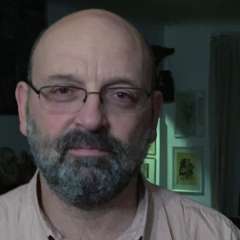After a three-years hiatus, the Israel Philharmonic was back at Carnegie Hall on Monday. Nonetheless, instead of recognizing on the podium the familiar face and gestures of Zubin Mehta, Music Director from 1977 to 2019, the public’s gaze focused on the youthful profile and precise gestures of his successor, the multi-talented Lahav Shani. The proposed programme was comprised of two Russian masterpieces, one overplayed (Tchaikovsky’s Violin Concerto in D major) and the other (Prokofiev’s Symphony no. 5 in B flat major) well known, but still providing a resourceful interpreter a framework to insert a personal view.
Gil Shaham has probably been the soloist in Tchaikovsky’s Violin Concerto hundreds of times with dozens of different orchestras during his long and distinguished career. Even if he doesn’t have anything necessarily new to say in his rendition, he still approaches the score with a truly infectious enthusiasm, like an athlete who is convinced that nothing can stand between him and another victory. If the conductor and the ensemble have any difficulties staying in sync with his intentions, so be it. Despite some rhythmical discrepancies (and some negligent brass playing) in the Allegro moderato, listeners were easily carried away by Shaham’s glistening tone, tremendously agile fingers and impeccable technique. There were no glitches in the sparkling Finale, Shani and his players following all the soloist’s twists and turns with ease, giving, at the same time, the impression that the solo violin’s line grows organically from the orchestral sound.
Shaham’s ability to colour Tchaikovsky’s melodic material differently, without exaggerated sentimentality, was even more evident in the central Canzonetta. The conversation between violin and woodwinds was exquisitely delicate while the fortissimo jolt marking the abrupt transition to the last movement was still surprising even if heard for the nth time. If Tchaikovsky’s concerto was marked by phrases that were often bent and stretched, Shaham’s encore – the Gavotte en Rondeau from Bach’s Third Partita – was an example of almost metronomic regularity.
Prokofiev’s Fifth Symphony had its premiere in 1945 the very day the Red Army crossed Vistula into German territory and many performances over-emphasize the score’s patriotic resonances. Shani underlined instead the music’s modernism, the unrelenting rhythmic patterns, the unusual counterpoint heard in the lower brass, the prevalent but never too harsh grating harmonies that Prokofiev embeds into his astounding orchestration. At the same time, eliciting great playing from individual players (from the flute- and oboe-intoned second theme in the first movement to the clarinet solo in the last) he made clear what a great melodist the composer was. Conducting from memory, the Israeli consolidated the entire arch of the symphonic discourse into a consistent statement, while fashioning with great care the individuality of each of the movements. He thus underlined the grandeur of the musical statement in the Andante, the sardonic vs the lyric in the “balletic” middle sections, the nostalgia before unbridled optimism in the Finale.
The assuredness with which the Israel Philharmonic tackled Prokofiev’s score was palpable as well in their encore. Paul Ben-Haim’s Fanfare for Israel is an uplifting but not very inspired work. Bookended by emphatic statements, there is a passage of unaffected tenderness that the ensemble played with great feeling. It made one curious about the composer’s First Symphony that Shani and the orchestra performed in other venues on the current tour, but not in New York.




